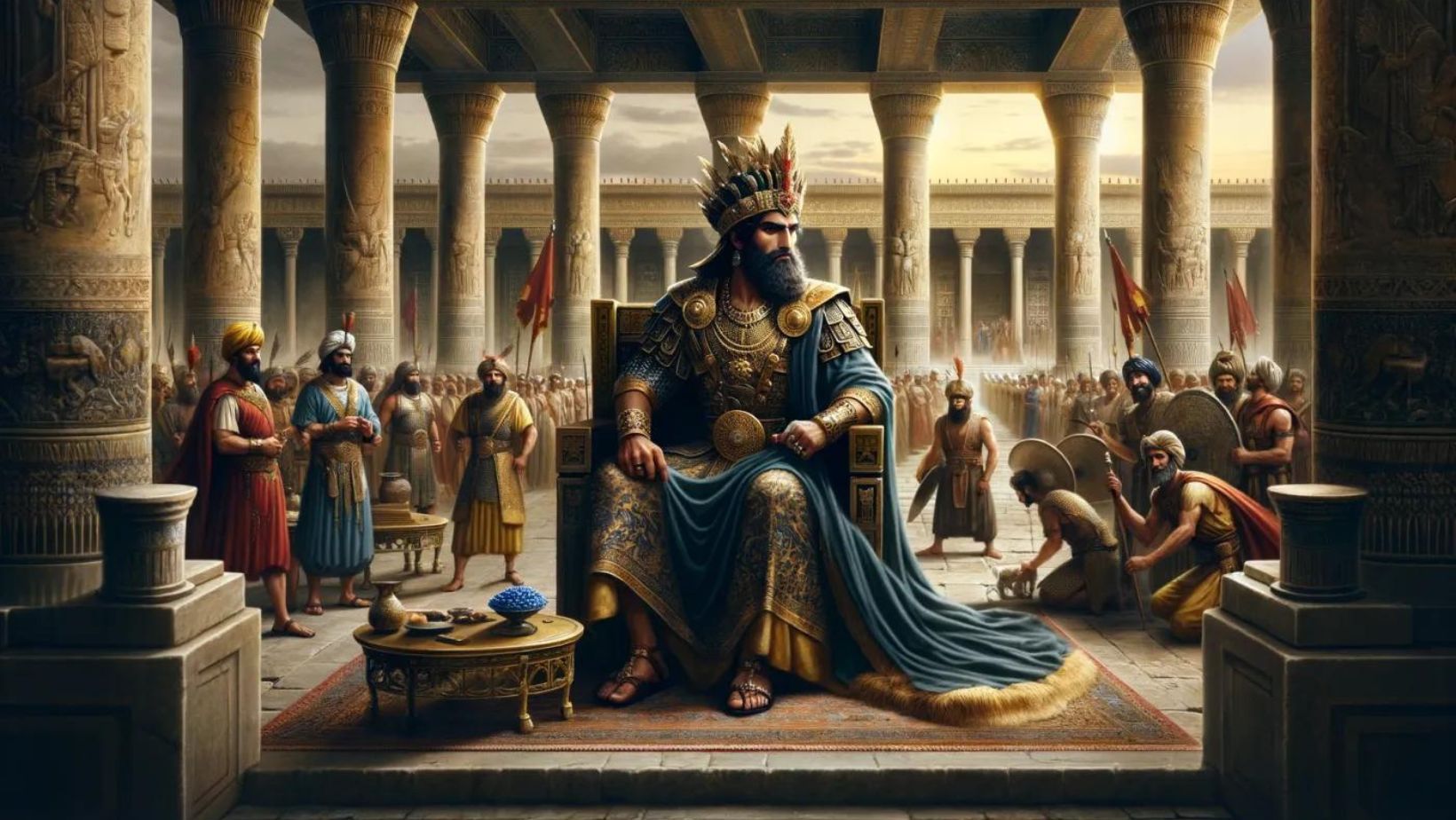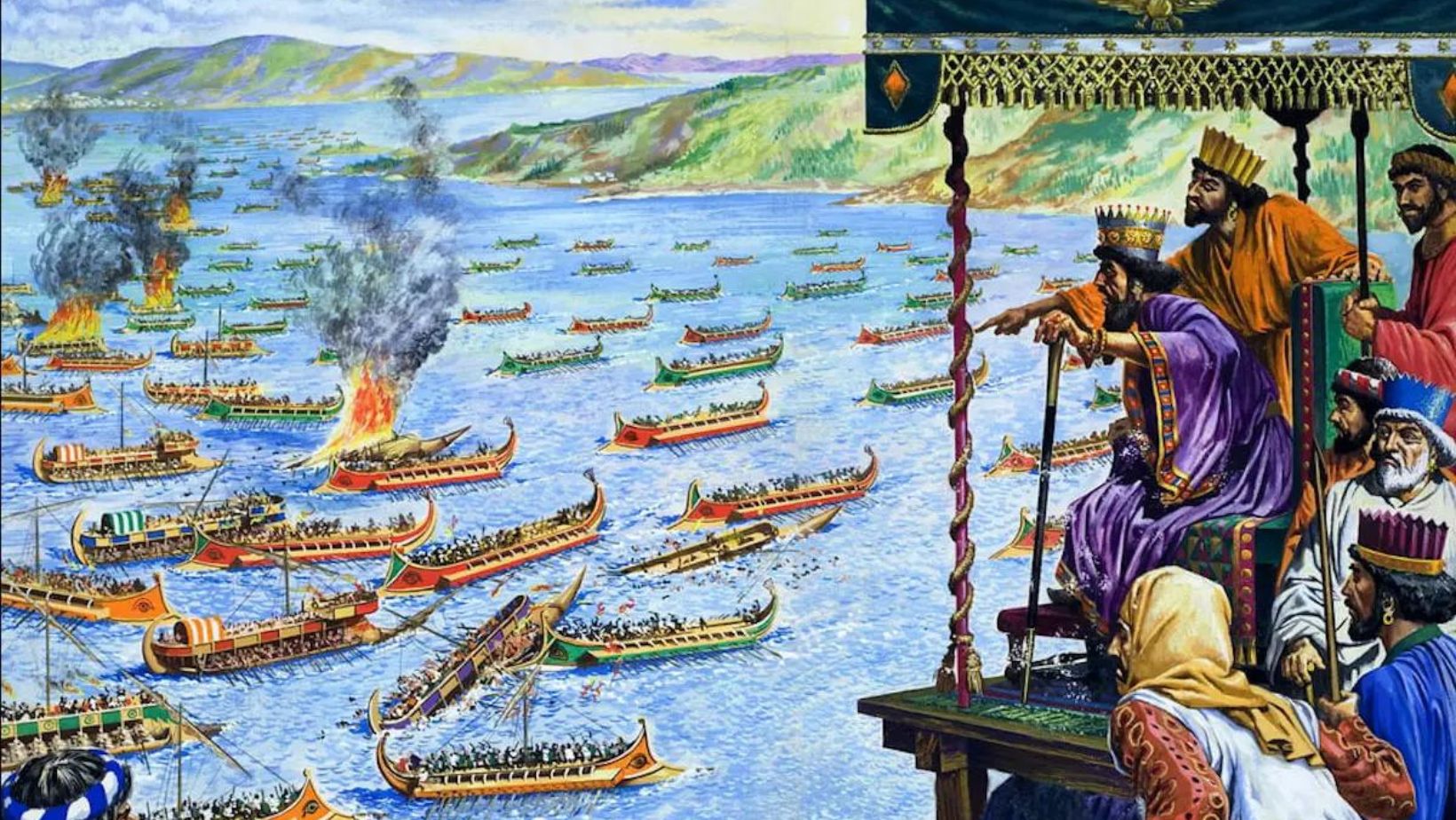Have you ever gotten lost exploring The Family Tree of King Xerxes and connections? It’s not just a list; it’s a saga spanning generations within the Persian Empire. From his mighty father, Darius I, to his son, Artaxerxes I, each name tells a story of power, intrigue, and sometimes tragedy. This journey through time gives us more than just names—it uncovers how one dynasty shaped an era.
Table of Contents:
- The Lineage of King Xerxes I of Persia
- Xerxes I’s Wives and Children
- The Legacy of Xerxes I
- Xerxes I’s Building Projects and Monuments
- The Greco-Persian Wars During Xerxes’ Reign
- Conclusion
The Lineage of King Xerxes I of Persia: The Family Tree of King Xerxes
King Xerxes I, also known as Xerxes the Great, was one of the most famous rulers of the Achaemenid Empire. But who exactly was this powerful Persian king?
Xerxes I was born to King Darius I, also known as Darius the Great. Darius I ruled the Achaemenid Empire from 522 to 486 BCE and was a key figure in expanding and solidifying Persian control over a vast territory.
Xerxes’ Mother: Atossa
Xerxes’ mother was Atossa, the daughter of Cyrus the Great. Some historians argue that Atossa was a powerful influence behind the scenes and may have even helped secure Xerxes’ position as heir to the throne over his older brother.
Xerxes’ Accession to the Throne: The Family Tree of King Xerxes

According to the ancient Greek historian Herodotus, Darius chose Xerxes because he was the first son born to him after he became the Persian king.
When Darius I died in 486 BCE, Xerxes ascended to the throne at around 35 years old. He had already served as governor of Babylon for over a decade, giving him valuable leadership experience.
Bas-reliefs at Persepolis depict a vivid scene of Xerxes being crowned as the new Achaemenid king, with Darius I seated on the throne and Xerxes standing behind him as the anointed heir.
Xerxes I’s Wives and Children: The Family Tree of King Xerxes
Like many Persian kings, Xerxes I had multiple wives and many children. But who were the most prominent members of his royal family?
Xerxes’ chief wife was Amestris, with whom he had several children. The Greek historian Herodotus recounts a disturbing tale of Amestris brutally mutilating a woman she saw as a romantic rival.
Other Wives and Consorts: The Family Tree of King Xerxes
In addition to Amestris, Xerxes had several other wives and concubines. According to Herodotus, Xerxes once fell in love with the wife of his brother Masistes. When she rejected his advances, he arranged a marriage between his son Darius and Masistes’ daughter Artaynte so he could be closer to his object of desire.
Notable Children: Achaemenes, Artaxerxes I, Darius
Among Xerxes’ many offspring, a few stand out in the historical record:
- Achaemenes served as a military commander and satrap
- Artaxerxes I would go on to succeed Xerxes as the next Achaemenid king
- Darius was Xerxes’ eldest son and original heir but was executed after a failed plot against his father
Other children mentioned in various sources include Amytis, Rhodogune, Tithraustes, Arsames, Gobryas, Hystaspes, and Aquarius. Xerxes’ large brood of sons and daughters solidified political alliances and filled important positions throughout the empire.
The Legacy of Xerxes I: The Family Tree of King Xerxes
Xerxes I’s legacy is complex, shaped by his military failures against the Greeks and his successes in consolidating Achaemenid power. So, how has this Persian king been remembered by history?
Much of what we know about Xerxes I comes from ancient Greek historians like Herodotus, who had a decidedly anti-Persian bias.
However, modern scholars caution against taking these narratives at face value. While Xerxes undoubtedly made some strategic blunders, the scale of his failures may have been exaggerated by the Greeks for propaganda purposes.
Portrayal in the Book of Esther: The Family Tree of King Xerxes
In the biblical Book of Esther, a Persian king named Ahasuerus is a central figure. Most scholars believe that Ahasuerus was based on Xerxes I, as their timelines, territories, and key details seem to match up.
The Book of Esther portrays Ahasuerus/Xerxes as a somewhat capricious ruler who was easily manipulated by his advisors. However, he is not depicted as an outright villain and ultimately acts to protect the Jewish people from persecution.
Impact on the Achaemenid Empire
Despite his military setbacks, Xerxes I still ruled over one of the largest empires the world had ever seen. The Achaemenid Empire reached its greatest territory under Xerxes, stretching from the Balkans to the Indus Valley.
Xerxes I undertook several impressive construction projects, including a grand palace at Persepolis and an expansion of the Royal Road network. He also maintained the complex bureaucracy and tax system that helped fund the empire.
However, the devastating losses against the Greeks weakened Persia’s strength and wealth. Later, Achaemenid kings struggled to recapture the glory of Xerxes’ early reign.
Xerxes I’s Building Projects and Monuments: The Family Tree of King Xerxes
Xerxes I is remembered not only for his military campaigns but also for the ambitious construction projects he undertook during his reign. These initiatives glorified the Persian Empire and solidified Xerxes’ own power and prestige.
Construction at Persepolis
Xerxes I oversaw a major expansion of the royal palace complex at Persepolis, the Achaemenid Empire’s ceremonial capital. He added the massive Apadana palace and the Hall of a Hundred Columns, which served as lavish settings for receptions and festivals.
Multilingual inscriptions extolled Xerxes’ power and greatness.
Babylonian records indicate that Xerxes also erected a golden statue of himself in the Apadana palace, a testament to his wealth and grandeur.
Xerxes I devoted considerable resources to expanding and maintaining the Royal Road, a network of highways that connected the far reaches of the Persian Empire. This allowed for faster communication, troop movements, and trade.
The Greek historian Herodotus marveled at the speed and efficiency of the Persian courier system, which could relay messages from one end of the empire to the other in a matter of days. This infrastructure was a key factor in holding together such a vast and diverse realm.
Monuments and Inscriptions: The Family Tree of King Xerxes
Across the territories he controlled, Xerxes I left behind monuments inscribed with trilingual cuneiform texts in Old Persian, Elamite, and Babylonian. These inscriptions trumpeted Xerxes’ achievements and his divine right to rule.
Some of the most famous examples are the “Harem Inscription” at Persepolis and the “Daiva Inscription” at Persepolis and Pasargadae. The latter text describes Xerxes’ suppression of rebellions and his destruction of “false temples” dedicated to other gods.
These building projects and monuments were a way for Xerxes to stamp his authority on the landscape of the empire. They projected an image of Persian wealth, power, and cultural sophistication that would endure long after Xerxes’ death.
The Greco-Persian Wars During Xerxes’ Reign: The Family Tree of King Xerxes
Xerxes I is perhaps best remembered for his massive invasion of Greece, which pitted the Persian Empire against a coalition of Greek city-states. This clash would have far-reaching consequences for both civilizations.
Xerxes’ father, Darius I, brutally crushed the uprising, but the Greeks of the mainland sent aid to their Ionian cousins.
Darius vowed to punish Athens and Eretria for their interference, launching the first Persian invasion of Greece in 492 BCE.
Preparations for the Second Persian Invasion: The Family Tree of King Xerxes
When Xerxes I came to power, he inherited his father’s desire for vengeance against the Greeks. He began assembling a massive army, recruiting soldiers from every corner of the empire.
To facilitate the passage of his army, Xerxes dug a canal across the isthmus of Mount Athos and built a pontoon bridge across the Hellespont. Herodotus reports that when a storm destroyed the bridge, Xerxes had the sea whipped as punishment for daring to defy him.
In 480 BCE, Xerxes’ army marched into Greece, meeting little resistance at first. The critical moment came at the narrow pass of Thermopylae, where a small force of Greeks led by the Spartan king Leonidas held off the Persians for three days.
Though the Persians ultimately broke through, the heavy losses they suffered foreshadowed the difficulties they would face against the determined Greeks.
Battle of Salamis

After Thermopylae, the Persians marched on Athens, which they captured and burned. Meanwhile, the Greek fleet sought to engage the Persians in a decisive naval battle.
The resulting Battle of Salamis was a crushing defeat for the Persians, decimating their navy.
Aftermath and Consequences: The Family Tree of King Xerxes
The loss at Salamis, combined with the later land defeat at Plataea, ended Persia’s ambitions in Greece. Xerxes was forced to retreat to Asia Minor, leaving the Greeks to rebuild their cities and develop their civilization without further Persian interference.
For the Achaemenid Empire, the failure to conquer Greece was a turning point. The cost of the invasion in blood and treasure weakened the empire and contributed to its eventual decline and fall.
The Greco-Persian Wars also had a profound cultural impact, with the Greeks coming to see themselves as the defenders of freedom against Eastern despotism. This ideological clash would shape the worldview of generations of Greeks and influence the course of Western civilization.
Key Takeaway: The Family Tree of King Xerxes
Dive into King Xerxes I’s family tree: From his parents, Darius the Great and Atossa, to his children like Artaxerxes I. Discover how lineage and power dynamics shaped Persia’s Achaemenid Empire.
Conclusion: The Family Tree of King Xerxes
So there you have it—the crux of King Xerxes’s family tree. Far from mere entries in an ancient register, these individuals were pivotal players in shaping their world and ours. They remind us that behind every historical event or towering monument were real people making decisions that would echo through history.
Their legacies aren’t just inscribed on stone tablets or dusty scrolls but continue to inspire curiosity and wonder today as we delve into our shared past—a testament to their enduring influence.

